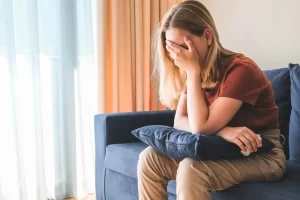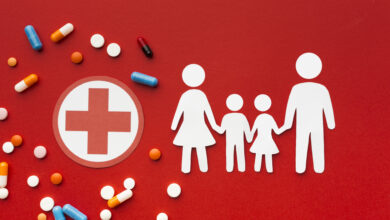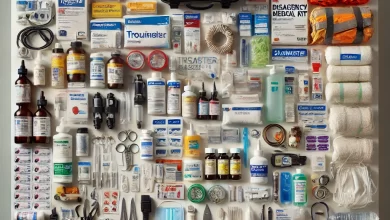Anxiety & Depression Treatment in Chicago: A Comprehensive Guide
Understanding Anxiety and Depression
Anxiety and depression are two of the most common mental health disorders affecting millions of people worldwide. While they are distinct conditions, they often co-occur, and their symptoms can significantly impact daily life. Understanding these disorders and the available treatment options in Chicago can help individuals seek appropriate care and support.
Anxiety is characterized by excessive worry, nervousness, and fear. Symptoms can include:
- Persistent worry or fear
- Restlessness
- Irritability
- Muscle tension
- Sleep disturbances
- Panic attacks
Depression involves persistent feelings of sadness, hopelessness, and a lack of interest or pleasure in activities. Symptoms can include:
- Prolonged sadness or low mood
- Loss of interest in activities
- Fatigue or low energy
- Changes in appetite or weight
- Sleep disturbances
- Difficulty concentrating
- Thoughts of death or suicide
Treatment Options for Anxiety and Depression
There are wide range of options for anxiety and depression treatment in Chicago including therapy, medication, lifestyle changes, and alternative treatments. Here’s a comprehensive look at the available options:
1. Therapy
Cognitive Behavioral Therapy (CBT): CBT is one of the most effective treatments for both anxiety and depression. It focuses on identifying and changing negative thought patterns and behaviors that contribute to these conditions.
Dialectical Behavior Therapy (DBT): DBT combines cognitive-behavioral techniques with mindfulness practices. It is particularly effective for individuals with severe depression or anxiety, especially those with co-occurring borderline personality disorder.
Interpersonal Therapy (IPT): IPT focuses on improving interpersonal relationships and social functioning to help reduce symptoms of depression.
Exposure Therapy: Primarily used for anxiety disorders, exposure therapy involves gradual exposure to feared situations to reduce avoidance behaviors and anxiety.
Psychodynamic Therapy: This therapy explores unconscious processes and past experiences that may contribute to current symptoms.
Group Therapy: Participating in group therapy provides support from peers who are experiencing similar challenges, reducing feelings of isolation and promoting shared learning.
2. Medication
Antidepressants: Commonly prescribed for both anxiety and depression, antidepressants such as selective serotonin reuptake inhibitors (SSRIs) and serotonin-norepinephrine reuptake inhibitors (SNRIs) can help balance brain chemicals.
Anti-anxiety Medications: Benzodiazepines and buspirone are often prescribed for short-term relief of severe anxiety symptoms. However, they are typically used in conjunction with other treatments due to potential dependency risks.
Mood Stabilizers and Antipsychotics: These medications may be used in combination with antidepressants for individuals with treatment-resistant depression or co-occurring bipolar disorder.
3. Lifestyle Changes
Exercise: Regular physical activity has been shown to reduce symptoms of anxiety and depression by releasing endorphins and improving overall well-being.
Healthy Diet: A balanced diet rich in omega-3 fatty acids, antioxidants, and other nutrients can support brain health and mood regulation.
Sleep Hygiene: Establishing a regular sleep routine and creating a restful sleep environment can improve sleep quality and reduce symptoms.
Stress Management: Techniques such as mindfulness meditation, yoga, and deep breathing exercises can help manage stress and reduce anxiety.
4. Alternative Treatments
Acupuncture: This traditional Chinese medicine practice involves inserting thin needles into specific points on the body to promote energy flow and reduce symptoms.
Herbal Supplements: Some individuals find relief from anxiety and depression symptoms with supplements such as St. John’s Wort, valerian root, and omega-3 fatty acids. However, it’s important to consult with a healthcare provider before starting any supplements.
Art and Music Therapy: Engaging in creative activities like art and music therapy can provide emotional expression and reduce symptoms.
Finding Treatment in Chicago
Chicago is home to numerous mental health professionals and treatment centers that specialize in anxiety and depression. Here are some steps to find the right treatment:
1. Consult Your Primary Care Physician: Your primary care doctor can provide referrals to mental health specialists and recommend treatment options.
2. Research Mental Health Providers: Look for licensed therapists, psychologists, and psychiatrists who specialize in anxiety and depression. Online directories and professional associations can help you find qualified providers.
3. Consider Treatment Centers: Chicago has several treatment centers and hospitals that offer comprehensive mental health services, including inpatient and outpatient programs.
4. Check Insurance Coverage: Ensure that the providers and treatments you are considering are covered by your insurance plan. Many providers offer sliding scale fees based on income if you do not have insurance.
5. Read Reviews and Seek Recommendations: Personal recommendations from friends, family, or online reviews can provide insights into the quality of care provided by different practitioners and treatment centers.

Support Resources in Chicago
Support Groups: Joining a support group can provide a sense of community and understanding. Organizations often offer both in-person and online support groups for anxiety and depression.
Hotlines and Crisis Services: If you or someone you know is in crisis, immediate help is available through hotlines and crisis intervention services.
Educational Workshops and Classes: Many organizations offer workshops and classes on managing anxiety and depression, stress reduction, and building coping skills.
Conclusion
Treating anxiety and depression requires a multi-faceted approach that includes therapy, medication, lifestyle changes, and support. Chicago offers a wealth of resources and professional services to help individuals manage and overcome these conditions. By seeking the appropriate treatment and support, individuals can improve their mental health and quality of life. If you or someone you know is struggling with anxiety or depression, don’t hesitate to reach out for help and explore the many options available in Chicago.
FAQs
1. What types of therapy are available for anxiety and depression in Chicago?
Chicago offers various therapeutic options for anxiety and depression, including:
- Cognitive Behavioral Therapy (CBT)
- Dialectical Behavior Therapy (DBT)
- Interpersonal Therapy (IPT)
- Exposure Therapy
- Psychodynamic Therapy
- Group Therapy
2. What medications are commonly prescribed for anxiety and depression?
Commonly prescribed medications include:
- Antidepressants: SSRIs (e.g., fluoxetine, sertraline) and SNRIs (e.g., venlafaxine, duloxetine).
- Anti-anxiety Medications: Benzodiazepines (e.g., diazepam, lorazepam) and buspirone.
- Mood Stabilizers and Antipsychotics: Often used in combination for treatment-resistant cases or co-occurring disorders.
3. How do I find a qualified therapist or psychiatrist in Chicago?
You can find qualified mental health professionals by:
- Consulting your primary care physician for referrals.
- Using online directories and professional associations.
- Checking with your insurance provider for in-network specialists.
- Reading online reviews and seeking personal recommendations.
4. What should I expect during my first therapy session?
During your first therapy session, you can expect:
- An initial assessment of your mental health history and current symptoms.
- Discussion of your treatment goals and preferences.
- Development of a personalized treatment plan.
- Establishment of a therapeutic relationship with your therapist.
5. Are there any free or low-cost mental health services in Chicago?
Yes, several organizations offer free or low-cost services:
- Community mental health centers
- Nonprofit organizations
- Sliding scale fee providers based on income
- University clinics offering services provided by supervised students
6. What lifestyle changes can help manage anxiety and depression?
Effective lifestyle changes include:
- Regular physical exercise
- A balanced and nutritious diet
- Maintaining a consistent sleep schedule
- Practicing stress management techniques like mindfulness and yoga
7. Are there support groups for anxiety and depression in Chicago?
Yes, there are numerous support groups available:
- Local mental health organizations often host in-person and online support groups.
- National organizations may have local chapters with regular meetings.
- Hospitals and treatment centers may also offer group therapy sessions.
8. Can I receive treatment for anxiety and depression if I don’t have insurance?
Yes, there are options available:
- Sliding scale fee providers adjust costs based on income.
- Some community health centers and nonprofit organizations offer free or low-cost services.
- Look for providers offering pro bono or reduced-fee sessions.
9. What are some alternative treatments for anxiety and depression?
Alternative treatments include:
- Acupuncture: Used to promote energy flow and reduce symptoms.
- Herbal Supplements: Such as St. John’s Wort, valerian root, and omega-3 fatty acids (consult a healthcare provider first).
- Art and Music Therapy: Provides emotional expression and symptom relief.
10. How can family and friends support someone with anxiety and depression?
Support can be provided by:
- Offering emotional support and understanding.
- Encouraging the individual to seek professional help.
- Participating in family therapy sessions if available.
- Providing assistance with daily tasks and responsibilities.
11. What is the difference between inpatient and outpatient treatment?
- Inpatient Treatment: Involves staying at a hospital or treatment center for intensive care and support.
- Outpatient Treatment: Allows individuals to live at home while attending scheduled therapy sessions and treatments.
12. What should I bring to my therapy sessions?
Bring the following to your therapy sessions:
- A list of current medications and any relevant medical records.
- Notes about your symptoms, concerns, and treatment goals.
- An open and honest attitude for effective communication with your therapist.
13. What is the process for getting a psychiatric evaluation in Chicago?
The process typically involves:
- Scheduling an appointment with a psychiatrist or mental health professional.
- Undergoing a comprehensive assessment, including medical and psychiatric history.
- Receiving a diagnosis and developing a treatment plan tailored to your needs.
14. How long does treatment for anxiety and depression typically last?
The duration of treatment varies based on individual needs and response to treatment:
- Short-term therapy may last several weeks to a few months.
- Long-term therapy can continue for several months to years.
- Medication duration will depend on your specific condition and response to treatment.
15. What are the signs that I should seek professional help for anxiety or depression?
Signs to seek professional help include:
- Persistent feelings of sadness, hopelessness, or excessive worry.
- Significant changes in appetite, sleep, or energy levels.
- Difficulty concentrating or performing daily tasks.
- Thoughts of self-harm or suicide.
Read More
Finding Reliable Urgent Care with Appointments in Johns Creek



